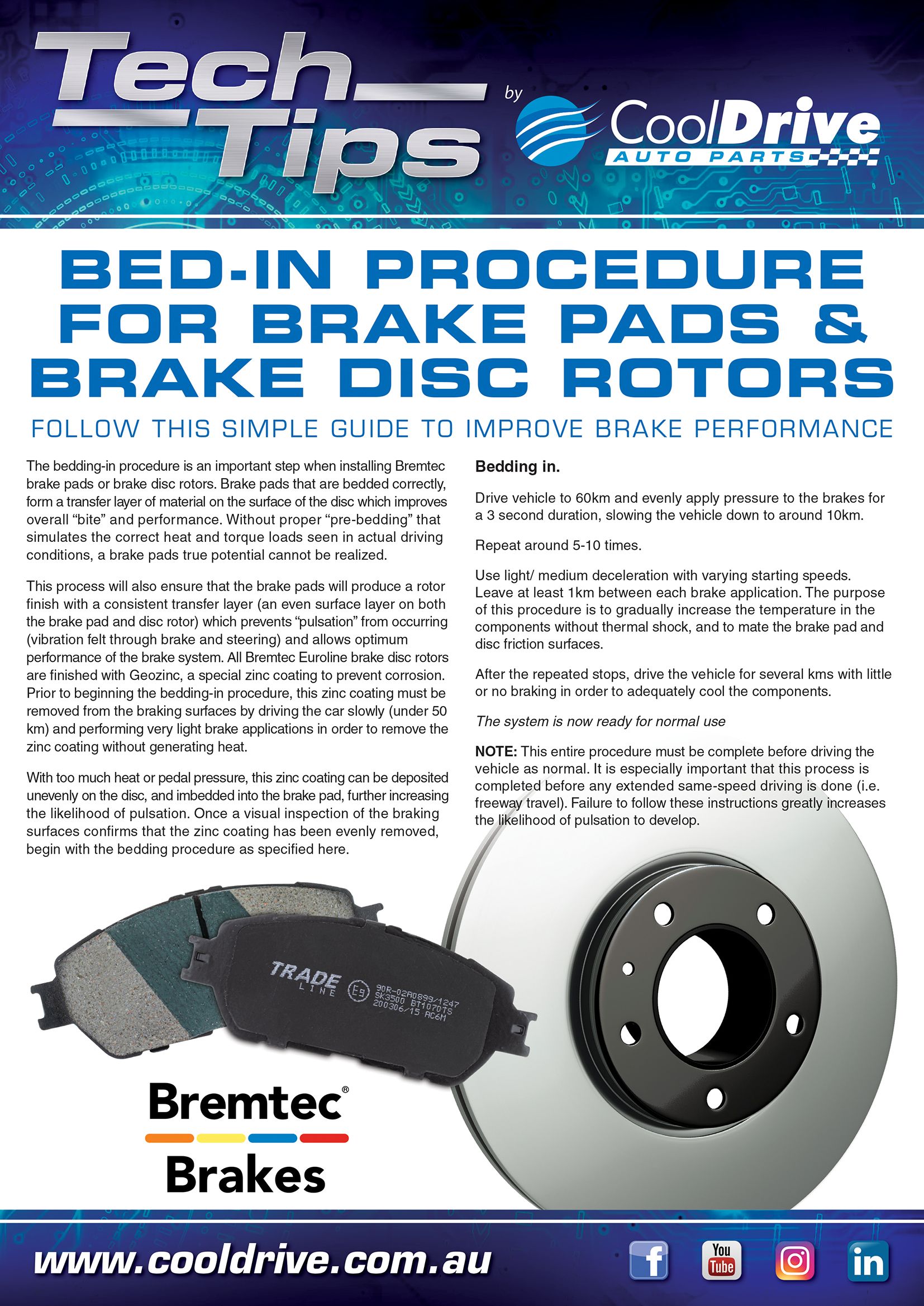FOLLOW THIS SIMPLE GUIDE TO IMPROVE BRAKE PERFORMANCE
The bedding-in procedure is an important step when installing Bremtecbrake pads or brake disc rotors. Brake pads that are bedded correctly, form a transfer layer of material on the surface of the disc which improves overall “bite” and performance. Without proper “pre-bedding” that simulates the correct heat and torque loads seen in actual driving conditions, a brake pads true potential cannot be realized.
This process will also ensure that the brake pads will produce a rotor finish with a consistent transfer layer (an even surface layer on both the brake pad and disc rotor) which prevents “pulsation” from occurring (vibration felt through brake and steering) and allows optimum performance of the brake system. All Bremtec Euroline brake disc rotors are finished with Geozinc, a special zinc coating to prevent corrosion. Prior to beginning the bedding-in procedure, this zinc coating must be removed from the braking surfaces by driving the car slowly (under 50 km) and performing very light brake applications in order to remove the zinc coating without generating heat.
With too much heat or pedal pressure, this zinc coating can be deposited unevenly on the disc, and imbedded into the brake pad, further increasing the likelihood of pulsation. Once a visual inspection of the braking surfaces confirms that the zinc coating has been evenly removed, begin with the bedding procedure as specified here.
Bedding In
Drive vehicle to 60km and evenly apply pressure to the brakes for a 3 second duration, slowing the vehicle down to around 10km. Repeat around 5-10 times. Use light/ medium deceleration with varying starting speeds.
Leave at least 1km between each brake application. The purpose of this procedure is to gradually increase the temperature in the components without thermal shock, and to mate the brake pad and disc friction surfaces. After the repeated stops, drive the vehicle for several kms with little or no braking in order to adequately cool the components.
The system is now ready for normal use
NOTE: This entire procedure must be complete before driving the vehicle as normal. It is especially important that this process is completed before any extended same-speed driving is done (i.e. freeway travel). Failure to follow these instructions greatly increases the likelihood of pulsation to develop.
This material has been prepared with the intent to provide a resource of reliable information; however no warranty (express or implied) is made as to its accuracy or completeness. Neither is any liability assumed by CoolDrive Auto Parts for damage or loss resulting from reliance on the information or process disclosed.




